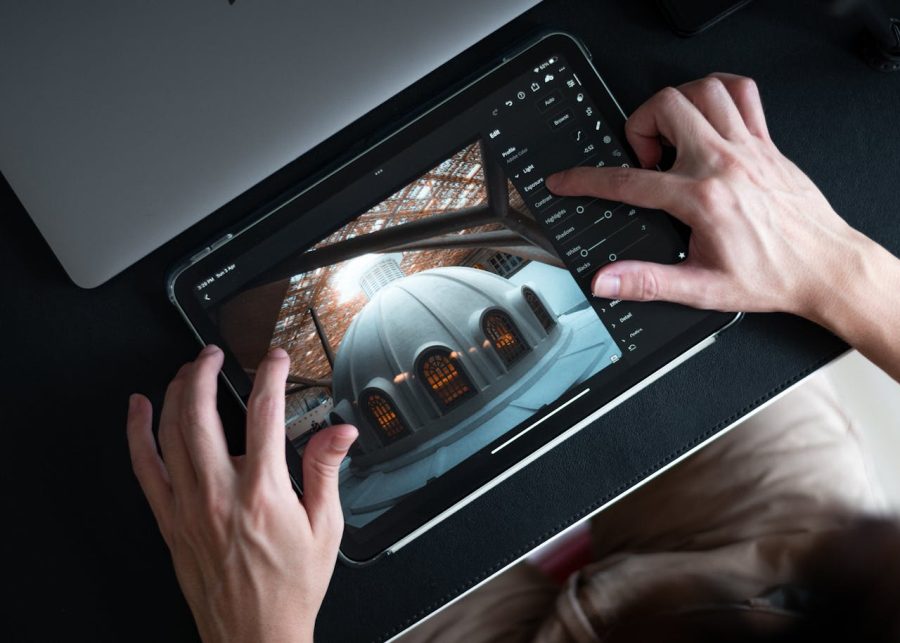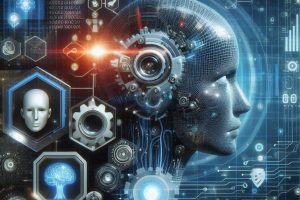With continued growth in Artificial Intelligence, Computer Vision technology is the most important and rapidly changing area of all. Phone facial recognition, product inspection during manufacturing, and real-time traffic monitoring for intelligent cities – the applications of AI Computer Vision are unlimited. But what are the magic tricks behind it all?
Understanding the foundation technologies behind Computer Vision solutions demystifies this useful tech and explains to companies and technologists what it can practically do and offer in terms of future possibilities.
What Are Key Techniques in Computer Vision?
Before diving into the tools and components behind Computer Vision companies, let’s first clarify the Computer Vision definition. Simply put, Computer Vision is a subfield of AI that enables machines to process, interpret, and make decisions based on visual data, whether from images, videos, or real-world input.
The most important techniques used in this field include:
- Image Processing
- Deep Learning and Neural Networks
- Machine Learning
- 3D Reconstruction
- Data Annotation and Labeling
- Sensor Integration
- Optical Character Recognition (OCR)
All these technologies combine to allow machines to “see” and “know” like human beings. However, being machines, they process all data much more quickly and precisely.
What Is the Foundational Role of Image Processing in Computer Vision?
At the core of all Computer Vision technology lies image processing. This lowest-level layer is responsible for taking raw visual data and getting it into formats machines can process.
Key processes are:
- Noise removal – cleaning up image data making it easier to analyze
- Contrast and brightness adjustment – optimizing image quality
- Edge detection – identifying shapes and object boundaries
- Filtering and transformations – altering images for pattern recognition
Without image preprocessing, even the strongest AI Computer Vision algorithms would fail to process visuals accurately. It is similar to pre-sharpening the picture before carrying out any actual analysis of it.
How Does Deep Learning and Neural Networks Contribute to Advanced Computer Vision Tasks?
The introduction of Deep Learning has boosted Computer Vision services in recent years. Leading the revolution are Convolutional Neural Networks (CNNs)—Deep Learning algorithms specialized for analyzing visual data.
These networks excel at:
- Image classification – identifying what is in an image
- Object detection – finding and locating multiple objects in a scene
- Semantic segmentation – labeling every pixel in an image
Deep Learning enables AI Computer Vision to achieve more complex tasks such as facial recognition, emotion detection, and even diagnosis of medical conditions from radiographic images.
What Is the Significance of Machine Learning in Computer Vision Applications?
Even though Deep Learning dominates the majority of domains, traditional Machine Learning remains of major importance in Computer Vision technology. Support Vector Machines (SVMs), Random Forests, and K-means clustering are some of the algorithms widely used in situations where:
- Less data can be employed to train
- Less complex models provide adequate performance
- Real-time processing with low computing power is essential
In the majority of business uses, especially with structured visual tasks (like bar code scanning or form recognition), these lighter versions of Machine Learning remain to offer useful and functional Computer Vision solutions.
How Do Datasets and Data Annotation Support Computer Vision Models?
No matter how advanced the algorithm is, AI Computer Vision models are just as good as the data they are trained on. High-quality datasets—typically manually or semi-automatically labeled—are the secret to Supervised Learning models to learn patterns and improve over time.
Data Annotation involves labeling images with tags such as object boundaries, class names, or facial landmarks. These labeled datasets train models to discover relationships and make accurate predictions.
Large, diverse datasets also allow models to generalize well to new environments, lighting, and camera angles, leading to more consistent Computer Vision services in the real world.
What Is the Role of Sensors Used by Computer Vision Systems?
Cameras in most applications are just the start. Sensors—especially ones that collect data beyond the visible light spectrum—add huge value to computer vision technology.
Standard sensors include:
- LiDAR – used for 3D mapping in autonomous vehicles
- Infrared sensors – ideal for night vision and thermal detection
- Depth sensors – used in robotics and augmented reality
- Stereo cameras – providing depth perception through twin lenses
These sensors allow AI Computer Vision systems to not only read two-dimensional images but the entire world in three dimensions with greater resolution and context awareness.
How Does 3D Reconstruction and Geometric Modeling Contribute to Computer Vision’s Ability to Interpret the Real World?
3D reconstruction is the process of acquiring objects’ or scenes’ form and appearance. It is core in such fields as:
- Architecture and building construction – for digital twin simulation
- Robotics – to help machines navigate complex environments
- Augmented Reality (AR) – for overlaying virtual objects onto real-world environments
Using geometry, photogrammetry, and multi-view imaging, Computer Vision technology builds comprehensive spatial knowledge—distracting from two-dimensional pictures into interactive, immersive 3D worlds.

What Are the Applications of Optical Character Recognition Within Computer Vision?
One of the most popular Computer Vision applications is Optical Character Recognition (OCR). OCR technology enables machines to extract text from images, documents, and even video frames.
Uses are:
- Digitizing paper documents in health care, legal, or financial services
- License plate reading in smart traffic systems
- Reading signs via smartphone cameras
- Mail sorting in postal automation systems
OCR remains one of the most popular Computer Vision services, proving its worth in both consumer and commercial environments.
Conclusion
Computer Vision technology integrates a wide variety of state-of-the-art tools and methods—everything from image processing and deep learning to 3D modeling and sensor fusion. All these technologies coexist and mutually enhance each other so that machines can not just see but actually perceive and interact with the visual world.
Computer Vision services help companies achieve smarter automation, real-time monitoring, and improved customer experiences. The services are transformative, scalable solutions that apply across almost every industry.
Whether it’s streamlining production lines, enhancing retail engagement, or charging autonomous vehicles, implementing AI Computer Vision will more and more be less of a matter of being an innovation—and more of a necessity.





 Your total news and information resource for all things Science, Technology, Engineering / Mathematics, Art, and Medicine / Health.
Your total news and information resource for all things Science, Technology, Engineering / Mathematics, Art, and Medicine / Health.
Leave a Comment